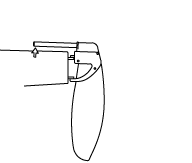Quote:
If the boats pointed higher this would all be easier.
Not really. The problem stems from two long, narrow hulls connected together. They don't like to turn together.
Quote:
If the boats weighed more they would have more "way-on" which would carry them through a tack. (Would you partially flood your hulls to help this in an emergency?)
NO. The water inside a hull doesn't stay in one place. It will want to slosh back and forth, making the boat dangerously unstable.
A catamaran jibing in heavy air is vastly different than a keel boat. A keel boat won't capsize or pitchpole - which is often the result of a heavy air jibe in a catamaran.
Tacking in heavy air is a matter of technique and coordination between the driver and crew. You have to pick your spot; steer through the tack; don't stall the rudders; hold the jib just long enough to get the bows past head to wind, but not long enough to blow the boat over backwards. It's very tough to do singlehanded.
Likewise, jibing in heavy air is technique - pick your spot (lull); sheet in the main and jib (travellers full out) to reduce projected area and keep the jib from wrapping around the forestay (don't cleat); maximize speed; minimize the steering; throw the main over and let the sheet run (acts like a shock absorber); keep your butt in the back of the boat.
Like any techniques - they require practice. You'll know when you get it right - and you'll know when you get it wrong. Just don't expect to get it right the first time or even every time after you do it right. I've been doing this for 36 years and I still blow it occasionally.






